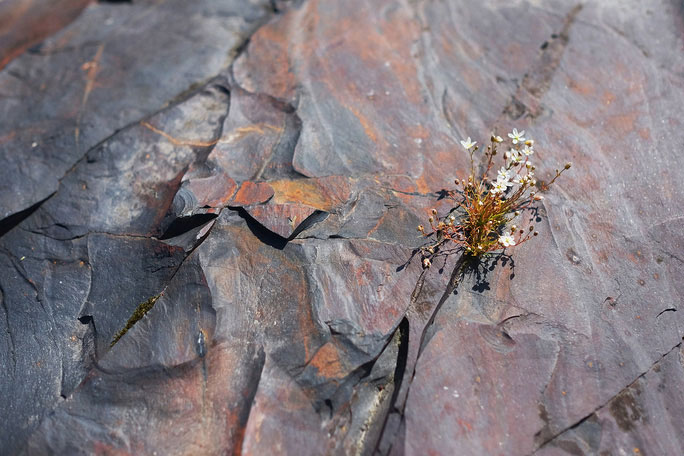Black matter at the bottom of the lake reveals the truth about a 'Hellish Earth'
A number of previous studies have shown that the Earth has experienced a period of death from death to breathability, only to return to death easily because of ease of breathing and life, starting about 2.4 billion years ago. is GOE - the great oxidation event. This theory, with some inadequate evidence, shows that the rise of cyanobacteria and the movement of tectonic plates have breathed new life into the planet by causing the oxygen - gas concentration of life - increase rapidly.

A 2 billion-year-old rock has a mysterious shiny black mineral, revealing the true history of Earth - (photo: K.Paiste).
GOE has helped the Earth creatures have a strong population growth, covering the globe. But then the number of organisms born was too much compared to the amount of oxygen available, resulting in "overload", the Earth became stifled again. So, the biggest extinction in Earth's history takes place, worse than the asteroid disaster that kills dinosaurs, turning our planet into a true hell.
The evidence for "Hell's Earth" is the Lomagundi - Jatuli (LJE) Incident, a phase in which large amounts of organic matter, most likely biological organisms, are buried in sediments.
However, the mysterious matter in Russia, a mineral called "ancient shungite", which the team led by Dr. Kaarel Mänd, majoring in Earth sciences at the University of Alberta (Canada) shows that Contrast: "Hell hell" may never exist. Our planet is still easy to live after GOE. This strange material dates after LJE, but has extremely high levels of molybdenum, uranium, and rhenium, which must be associated with abundant oxygen.
This finding means that during this period of material existence, it is not possible for Earth to be breathed by living creatures to the point of lack of oxygen. The LJE disaster can be caused by another mystery! So maybe it's time to break down the old theory and find a more plausible answer, which is what the team intends to do after the initial finding.
The research has just been published in the journal Nature Goescience.
- The age of ancient stones was wrongly measured to millions of years!
- Meteors have created the oldest rocks of the Earth
- Dive to the bottom of the coldest lake in the winter
- The 15m wreck intact after 150 years of the lake bottom of America
- The ancient 'city' mystery at the bottom of the lake no one knows for thousands of years
- Decode mystery aircraft under the lake
- 41 minutes on the bottom of the lake and the marvelous end of the 13-year-old boy shocked the doctor
- Detecting signs of life in the bottom of the Antarctic lake
- What if a black-sized black hole attacked the Earth?
- The scary truth about black ice near the Arctic
- The discovery of a new black hole 30,000 light-years from Earth
- Scientists think they have accidentally found dark matter
- Discover the hiding place of Loch Ness monster monster?
- The most black hole near the Earth is red when
 Discovered an ancient centipede fossil 99 million years old
Discovered an ancient centipede fossil 99 million years old Discovered bat-like dinosaurs in China
Discovered bat-like dinosaurs in China Discovered a 200-year-old bronze cannon of the coast
Discovered a 200-year-old bronze cannon of the coast Discover 305 million-year-old spider fossils
Discover 305 million-year-old spider fossils